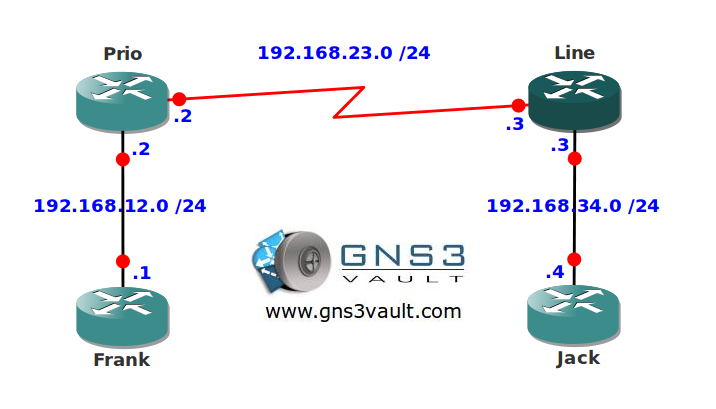Scenario:
You work for a large provider in India as a senior network engineer specialized in Quality of Service. You have a number of slow serial links connected to routers with a low CPU usage. You decide to implement header compression so you can squeeze the most out of your network.
Goal:
- All IP addresses have been preconfigured for you.
- Configure RTP compression on router Prio for all RTP packets.
- Configure TCP compression on router Line for all TELNET packets.
IOS:
c3640-jk9s-mz.124-16.bin
Topology:

Video Solution:
Configuration Files
You need to register to download the GNS3 topology file. (Registration is free!)Once you are logged in you will find the configuration files right here.

Do you want your CCNA or CCNP Certificate?
The How to Master series helps you to understand complex topics like spanning-tree, VLANs, trunks, OSPF, EIGRP, BGP and more.
Written by René Molenaar - CCIE #41726


The power of Policy-maps and the MQC. You specify the compression in the policy map, after classify the appropriate protocols. The next question is what protocols is it worth compressing the header on for best performance. Remember compression will effect the CPU/Memory on production routers.
http://www.cisco.com/en/US/docs/ios/12_2t/12_2t13/feature/guide/fthdrcmp.html
I was wondering…
The exercise says to compress all rtp packets on router Prio. Wouldn’t “ip rtp header-compression” under the interface be sufficient?
Why do we need to configure the MQS to achieve that?
Thanks in advance,
Katerina